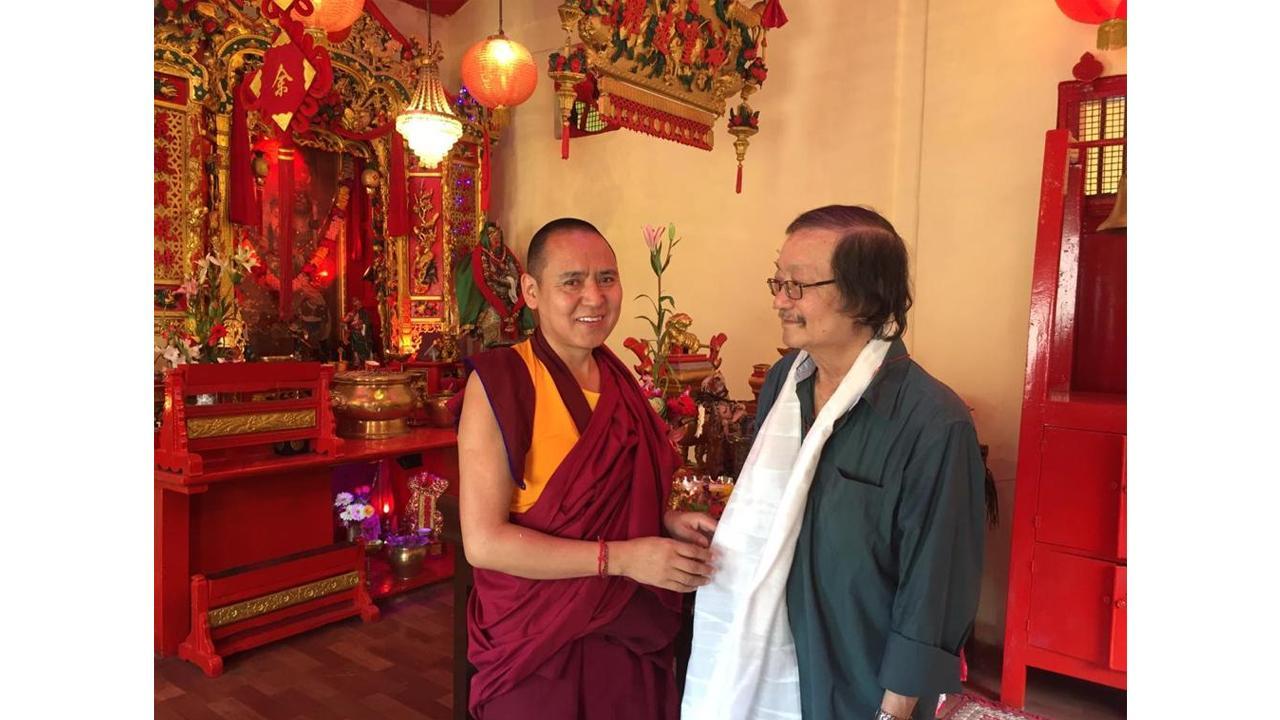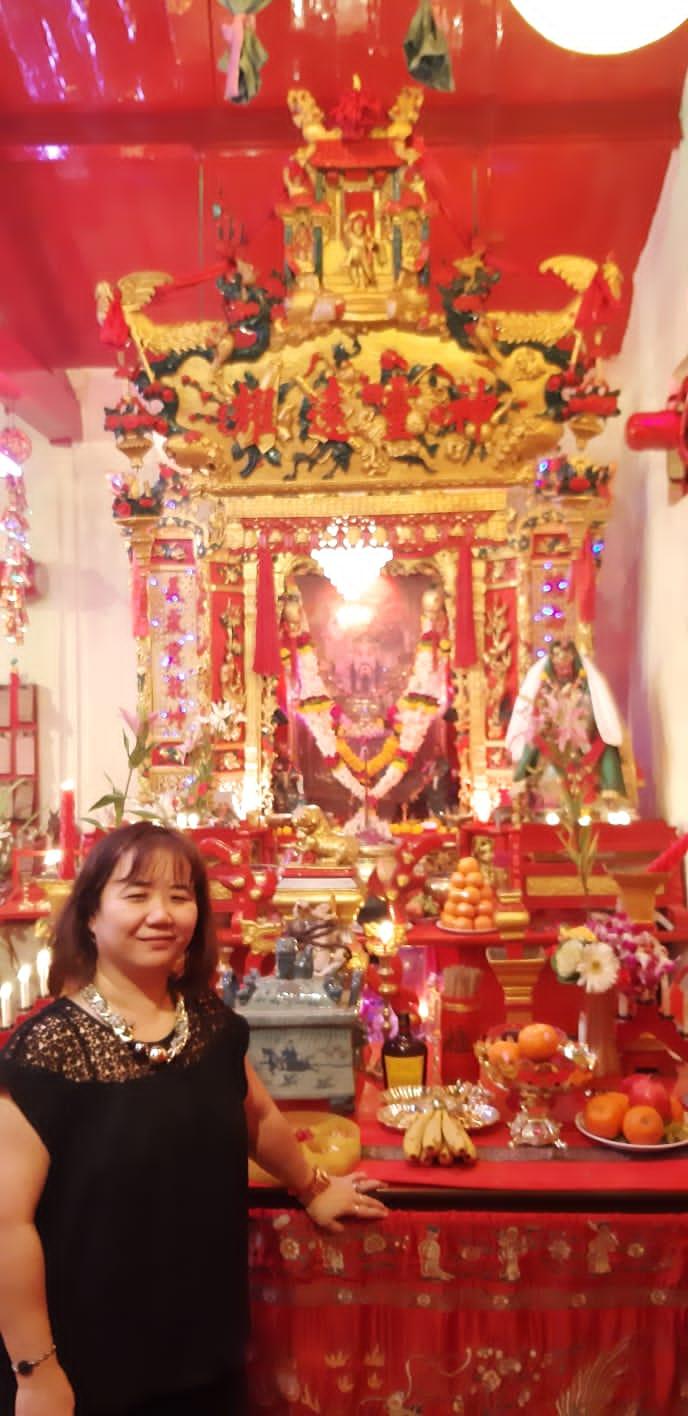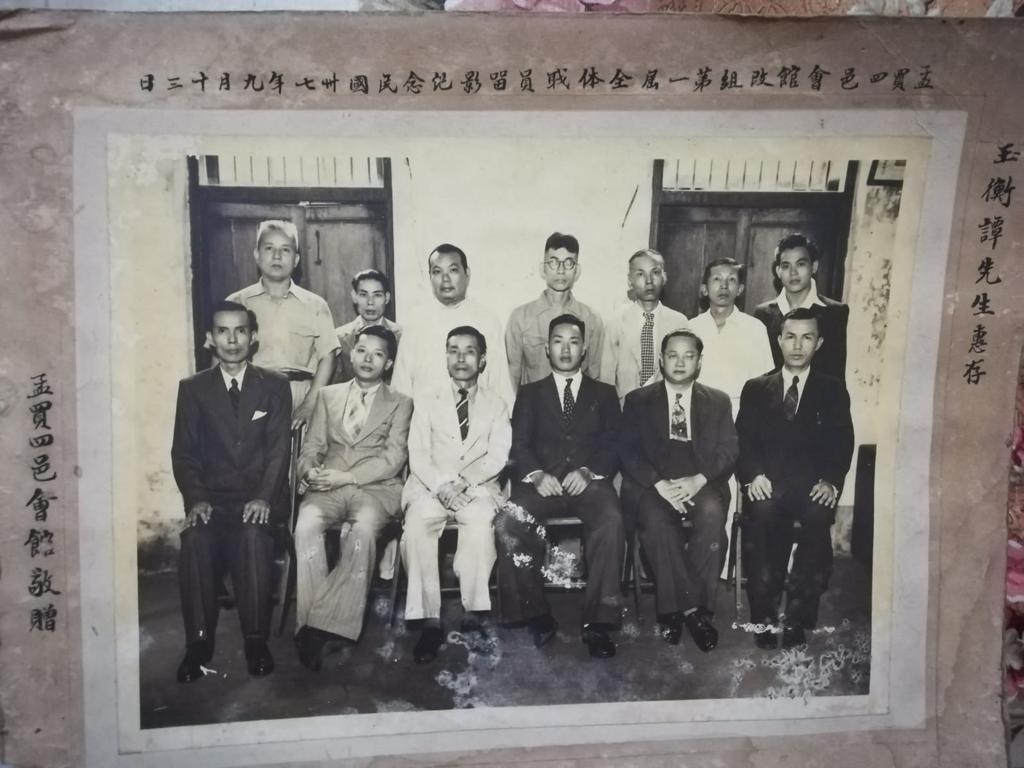A freewheeling chat with Albert Tham, the caretaker of the only Chinese temple in Mumbai and Moi Sang Lai, a Chinese Indian, reveals surprising similarities between Indian and Chinese customs and rituals.

Albert Tham with monk from Sera Jey Monastery
Talking about the location and history of the temple, Albert Tham, caretaker of the temple, says, "The Chinese temple is located near Mazgaon Dock in Mumbai, and depicts the teaching of Taoism,
ADVERTISEMENT
Buddhism, and Confucius philosophy. The temple is about 68 years old, however, the
building it’s located in is almost 100 years old and there is an interesting story behind it. The building was built by the Cantonese Tham clan when they migrated to India (Bombay) during the 18th century. Because most of them were merchants, at first this place was a Marine Institute, named THAM CHAAT (Tham was their surname and Chaat means clan) and meant to train the people and employ them in the British India Shipping Co. like sailor, fitters, welder, cooks, carpenters etc. In the absence of a temple in the city, one room of this building was converted into a temple, which was completed in 1953. This is engraved in the offering table which is in the temple.

Moi Sang Lang in temple 2
At present, while there is no survey for the exact number, there are about 1000 to 2000 Chinese people spread all over Mumbai, and their Chinese New Year is according to the Lunar calendar like the Hindu and Muslim calendars. It is usually in January or February and in 2022 it will be on 1st February - The Year of the Tiger.
Describing a few ceremonies and rituals involved in celebrating Chinese New Year, Tham says, "A month before the New year, the Chinese just like the Indians start renovating or cleaning their homes. They also start buying new clothes, shoes, groceries, dry fruits, fruits, flowers, having haircuts, and auspicious words in red paper for good luck which are stuck outside and inside the house. Food prepared for evening snacks has a special ritual - after thanking the Kitchen God, for providing meals throughout the year, the food is then placed in the Altar of our ancestors and departed ones with their favourites objects like wine, cigarettes etc. Similarly it is placed in the Altar of God and Goddess. Also joss sticks, candles, flowers, and paper money is offered to everyone so that they can enjoy their heavenly abodes.
People and devotees even offer wine to the Warrior God and after praying, they consume the wine, like prasad. There have been many occasions where people have enjoyed a few more than necessary cups of wine in the temple but then devotees tend to have a special bond with the Warrior God. It is a common practice for devotees to go out for dinner and drinks and then come to the temple to pray to the warrior god, even more so during festivals.”
Explaining a few more interesting customs and rituals, Moi Sang Lai, the Chinese Indian says, "After dinner, members of the family can go and visit their friends and relatives, and usually go to the temple to pay their respects and thanks to the respective gods and goddess, and offerings are placed in the offering table - 3 chopsticks, 3 bowls of cooked rice, 3 cups of wine or whiskey, because 3 signifies the word ‘Alive’. After completing the prayer one should tilt the offerings even the wine about 5 degrees, it means I offer you to take it with you and the 3 cups of wine are spread in the ground in front that also signify that the land or earth will prosper.
On whether the Chinese also celebrate 1st Jan and their indigenous new year like Indians, Tham says, "Yes, we do celebrate all festivals, and respect all cultures, even Halloween night" and adds "Only name, time, and culture are a bit different but it’s one and the same.

Members of the Chinese community who contributed to building the temple in Mazagaon. Second Row, 2nd from the right is Albert Tham's father, Tham York Hung
 Subscribe today by clicking the link and stay updated with the latest news!" Click here!
Subscribe today by clicking the link and stay updated with the latest news!" Click here!







